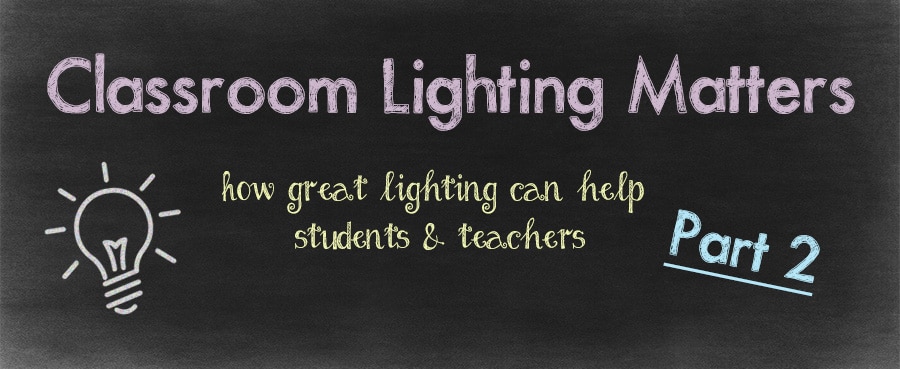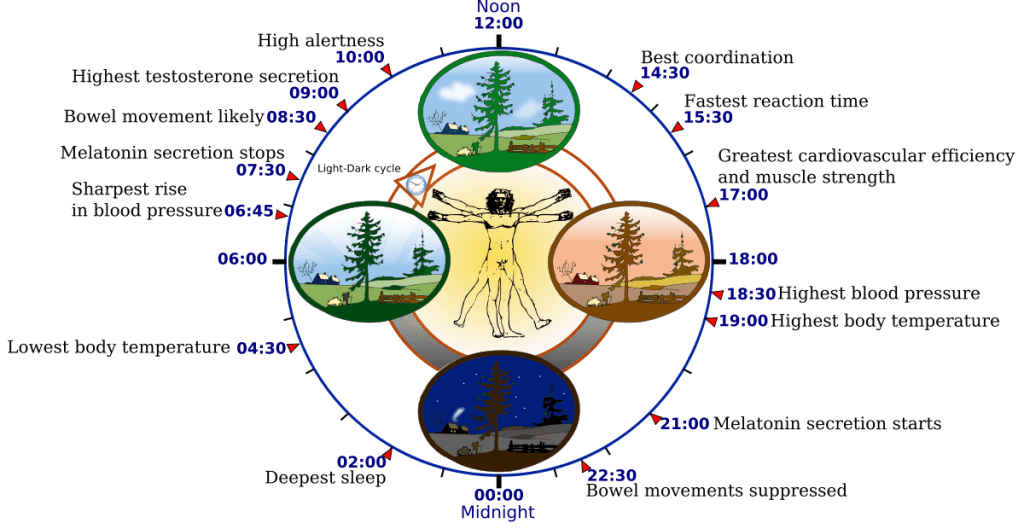Generally, we tend to think that the yellow lighting we are accustomed to is the “warmest” light and one that will simulate sunlight the closest. However, a recent study shows that a color on the other end of the spectrum, blue lighting, helps children stay focused and healthy, especially when exposed during early hours of the school day.
In the first post of our Classroom Lighting Matters series, we discussed a study by Liebel et al., which showed that using light with a higher blue content will shrink the diameter of the pupil, leading to higher visual acuity, or the ability to see clearly.
The study also showed a direct link between pupil size and reading performance due to increased blue spectrum coloring as opposed to increased brightness.
In this post, we’ll explore how a study by Figueiro and Rea proved the benefits of exposure to blue spectrum lighting early in the morning because it prepares the body for a day of activity and stress.
How Does Exposure to Blue Spectrum Classroom Lighting Affect Students?
Our bodies have an internal clock called circadian rhythms that regulates our sleep, wake and other bodily processes.
Our bodies contain an important gland called the pineal gland, which produces melatonin and serotonin, two hormones critical to the sleep cycle. Serotonin is responsible for keeping us alert, awake and aware, while melatonin is the hormone that helps us fall asleep.
In order to jumpstart circadian rhythms for the rest of the day, we need exposure to short wavelength lighting, or bluer light. Exposure to the blue-green part of the color spectrum queues the pineal gland to release serotonin, which helps us wake up.
In the school year most children are inside during the pivotal morning hours, and most schools do not provide adequate “daylight” lighting inside, so students are not reaching their full potential of performance, health and well-being.
Research has shown that students who are not exposed to full spectrum, or daylight, lighting early in the morning test poorer than students who have been exposed. For more information on how classroom lighting affects students’ reading and math test scores, read our next post in the series.
Transforming your classroom into a learning zone
Lighting is a critical factor in providing an optimal learning environment. By providing daylight in the classroom with full spectrum light filters, students will be more alert, awake and energetic.
NEXT: Does lighting Affect Student’s Test Scores?
Learn how artificial lighting impact the eye’s ability to perform.
Resources
For more information regarding blue light filters for the classroom and how they can improve the learning environment, please visit our resource center.
Citations
Figueiro, Mariana and Rea, Mark, “Short-Wavelength Light Enhances Cortisol Awakening Response in Sleep-Restricted Adolescents,” International Journal of Endocrinology, vol. 2012, Article ID 301935, 7 pages, 2012. doi:10.1155/2012/301935
Liebel, Brian, Sam Berman, Robert Clear, Rita Lee, and Marc Fountain. “Reading Speed and Accuracy Are Affected by Lighting Level.” Walalight. N.p., 26 Mar. 2014. Web.

